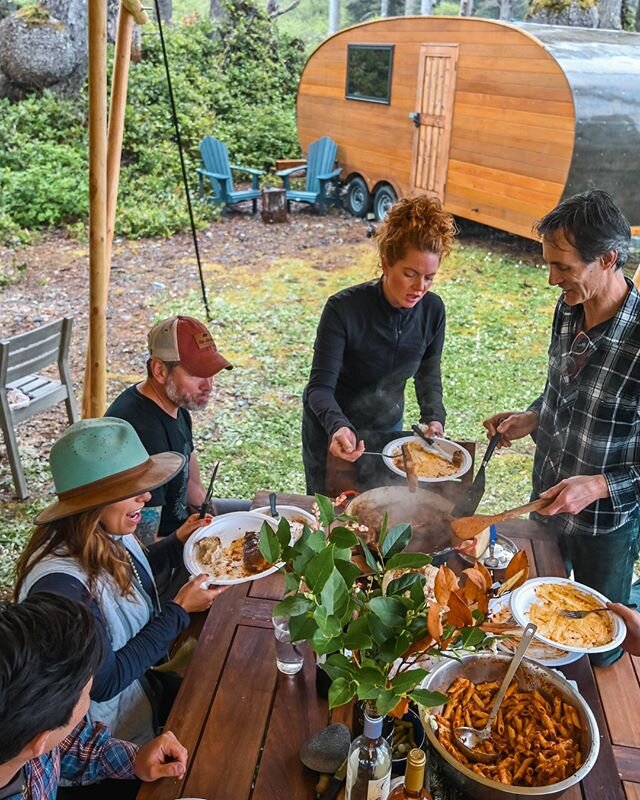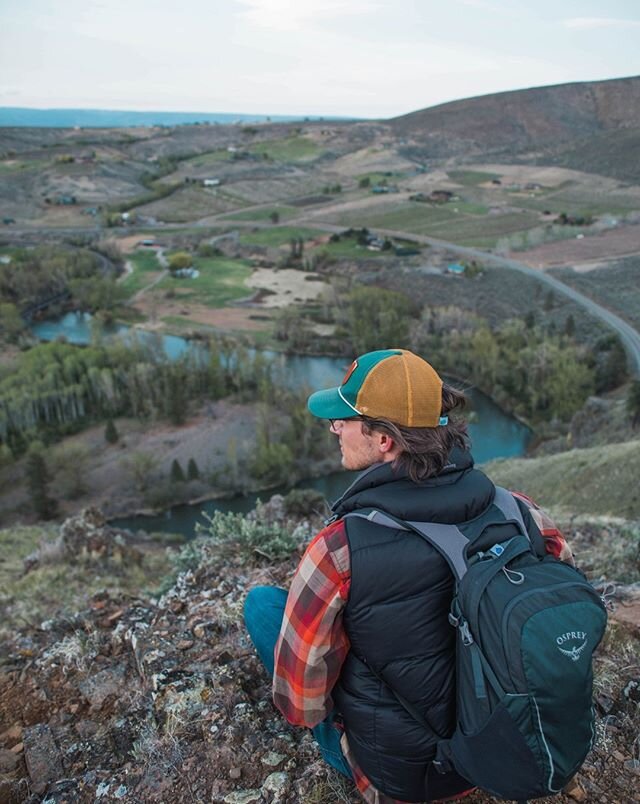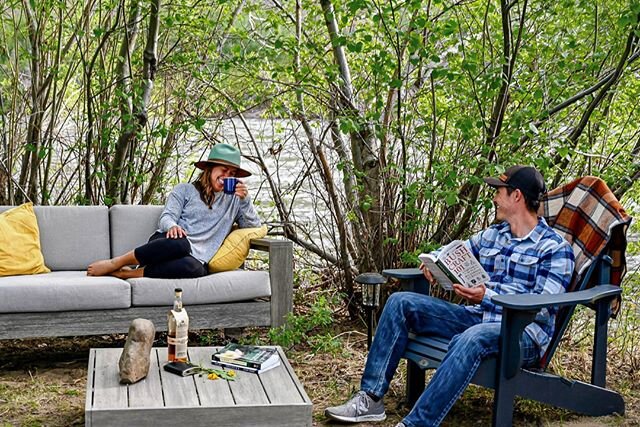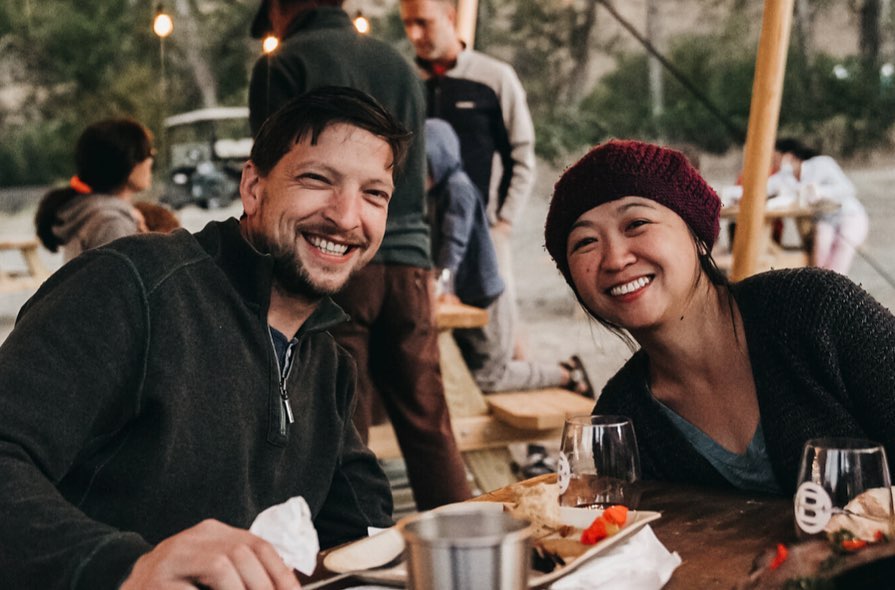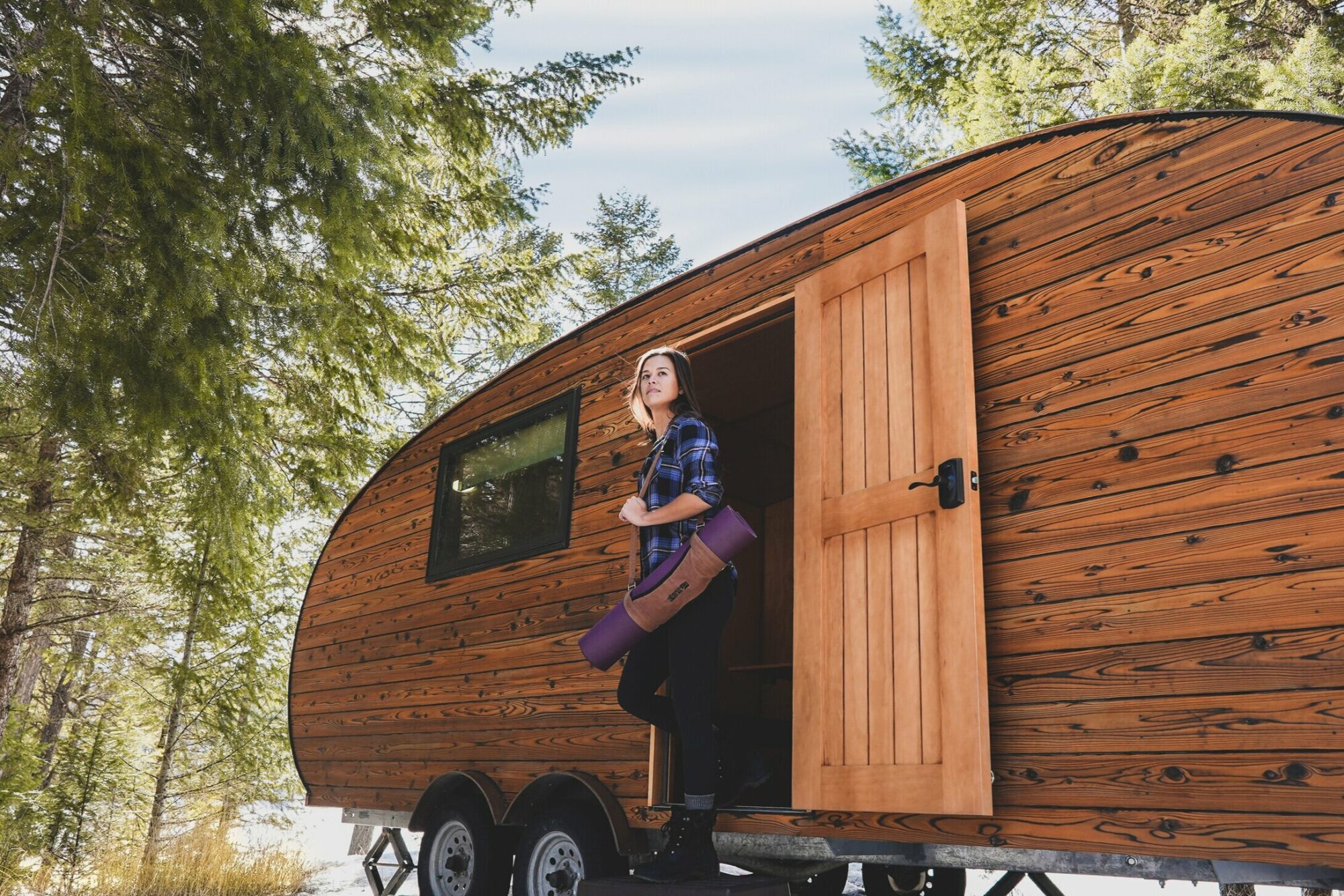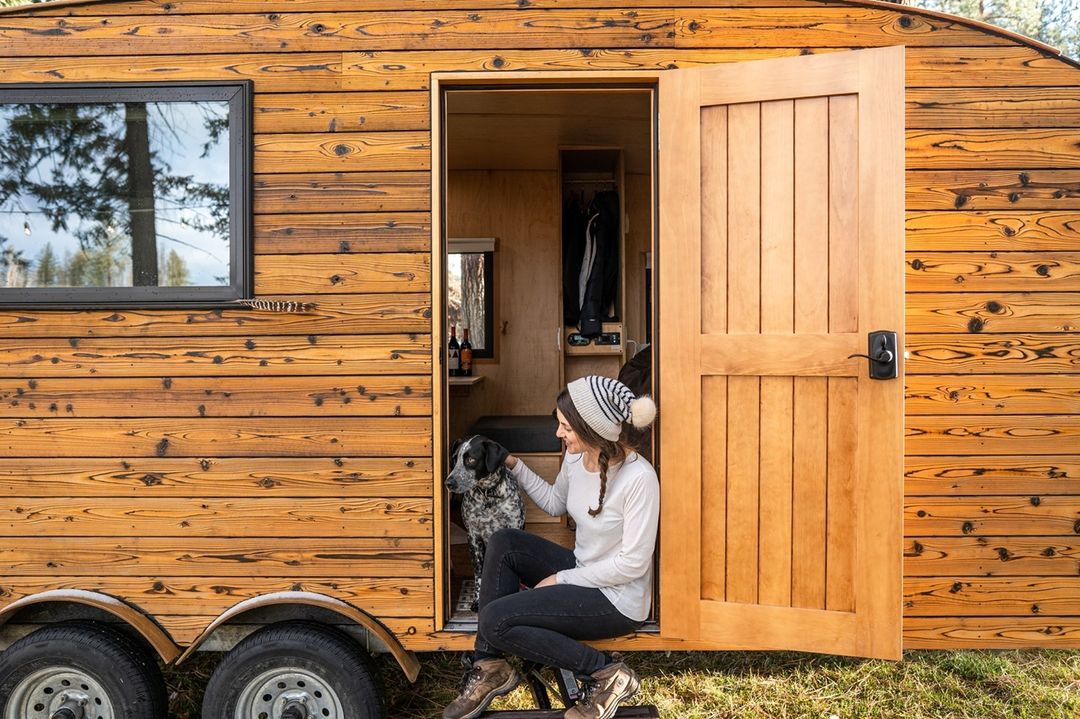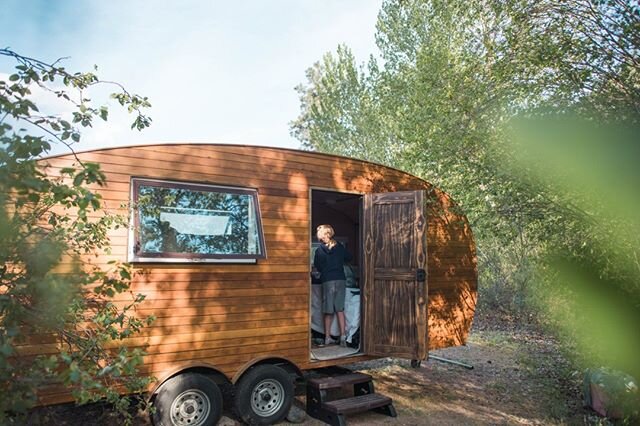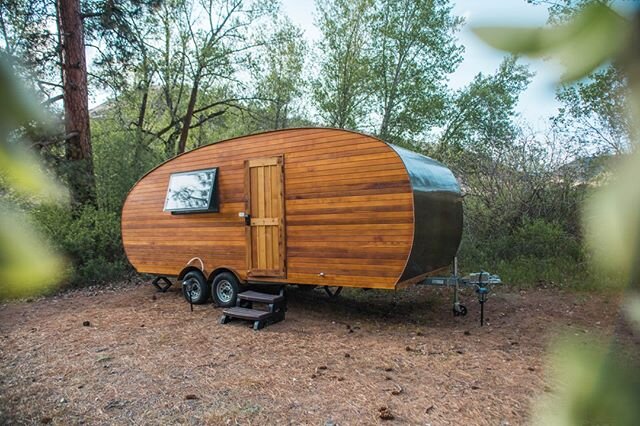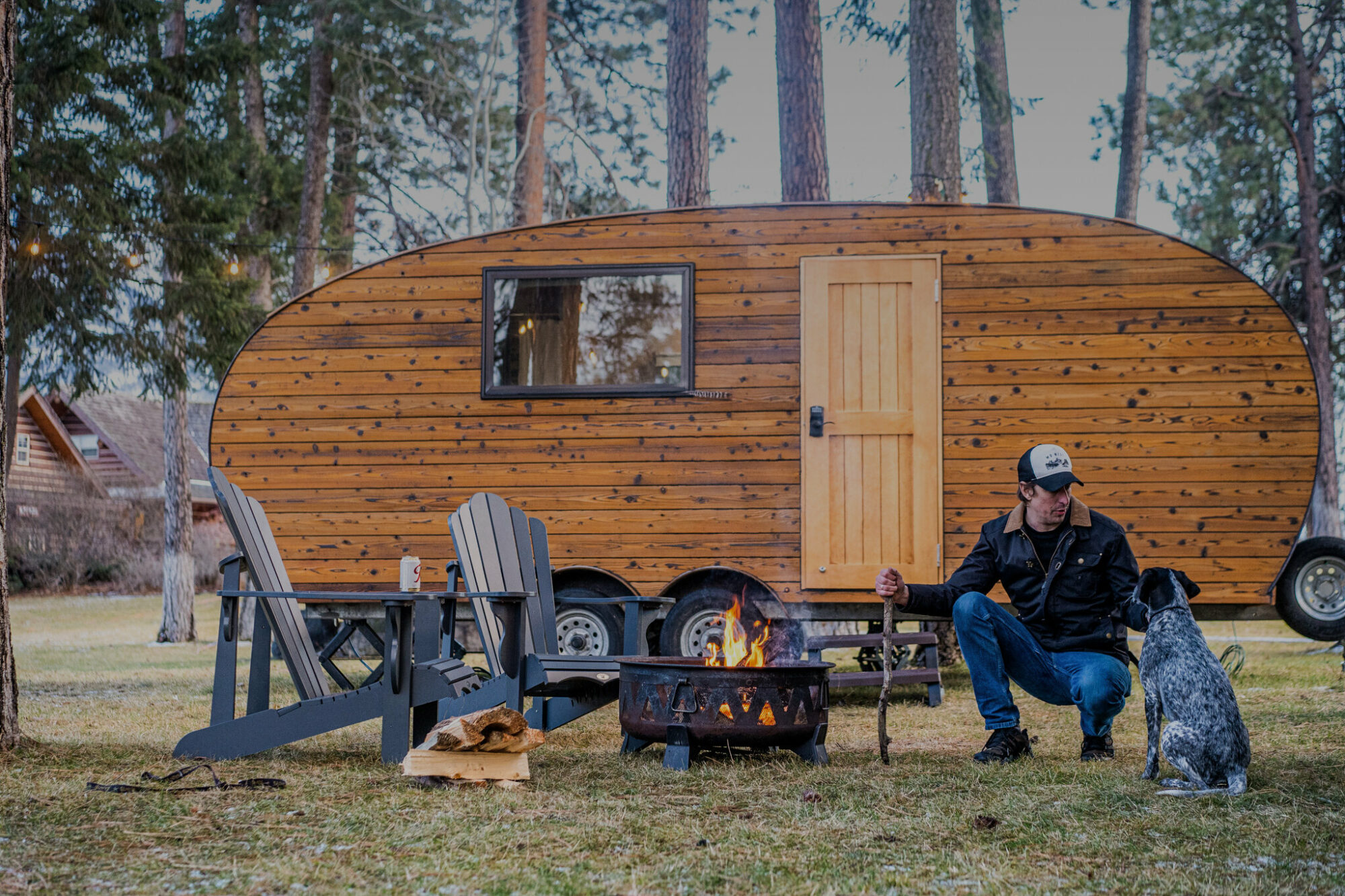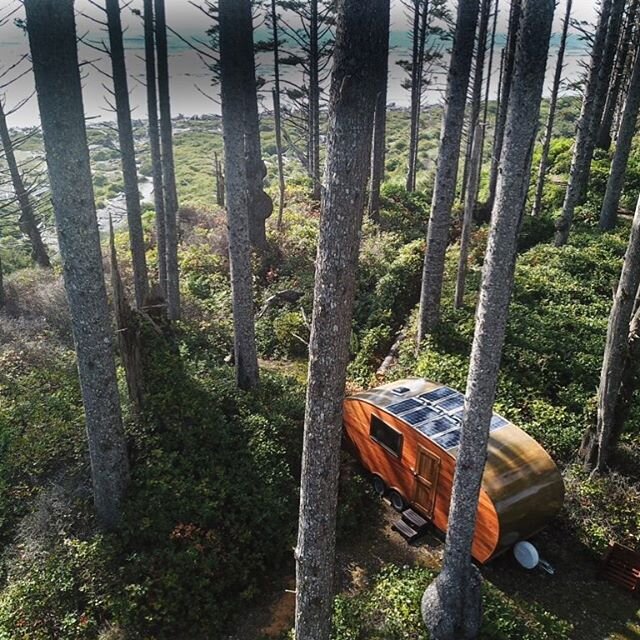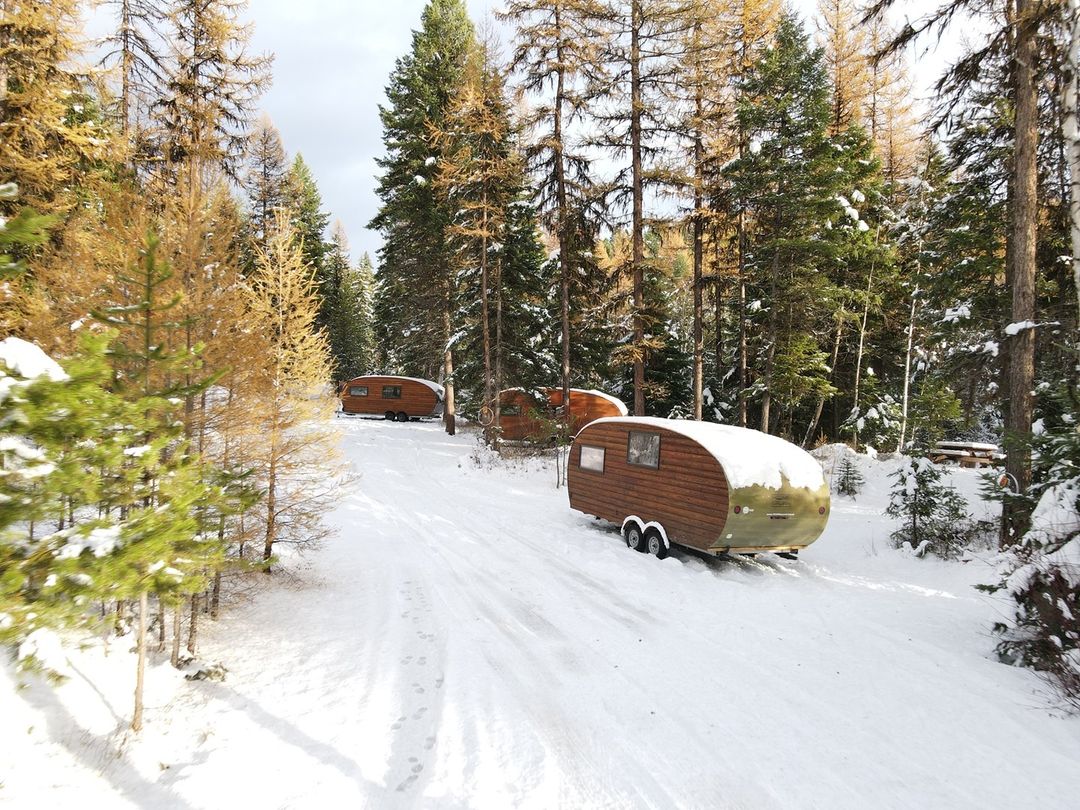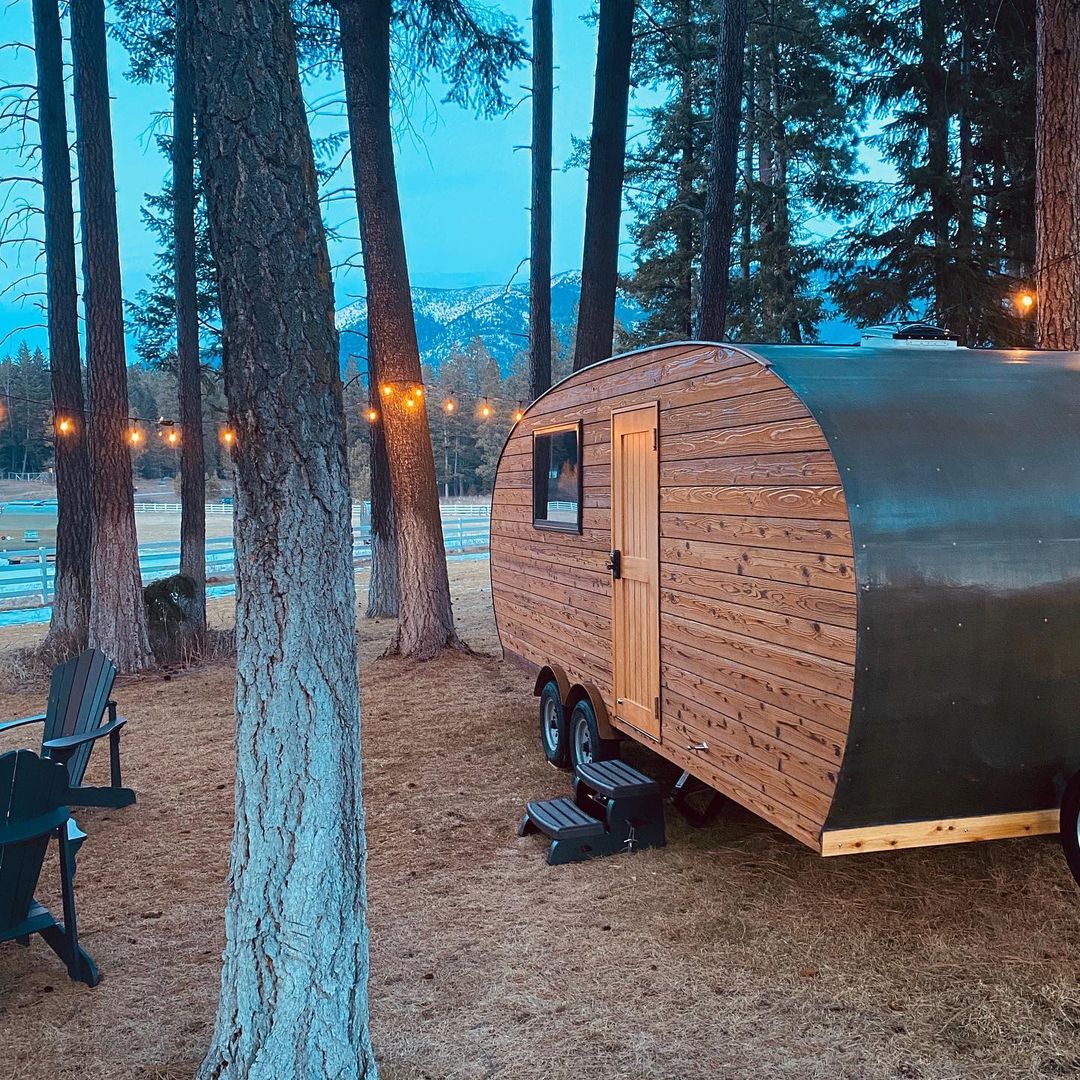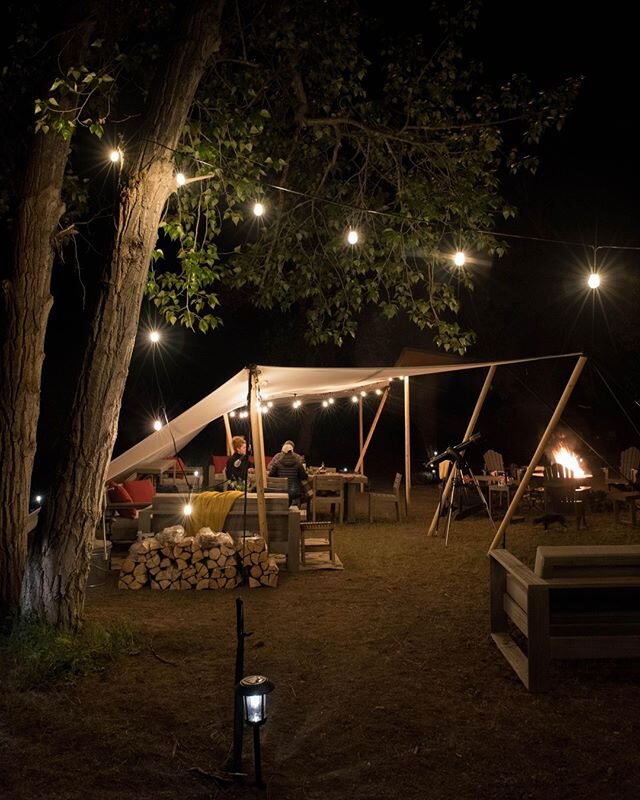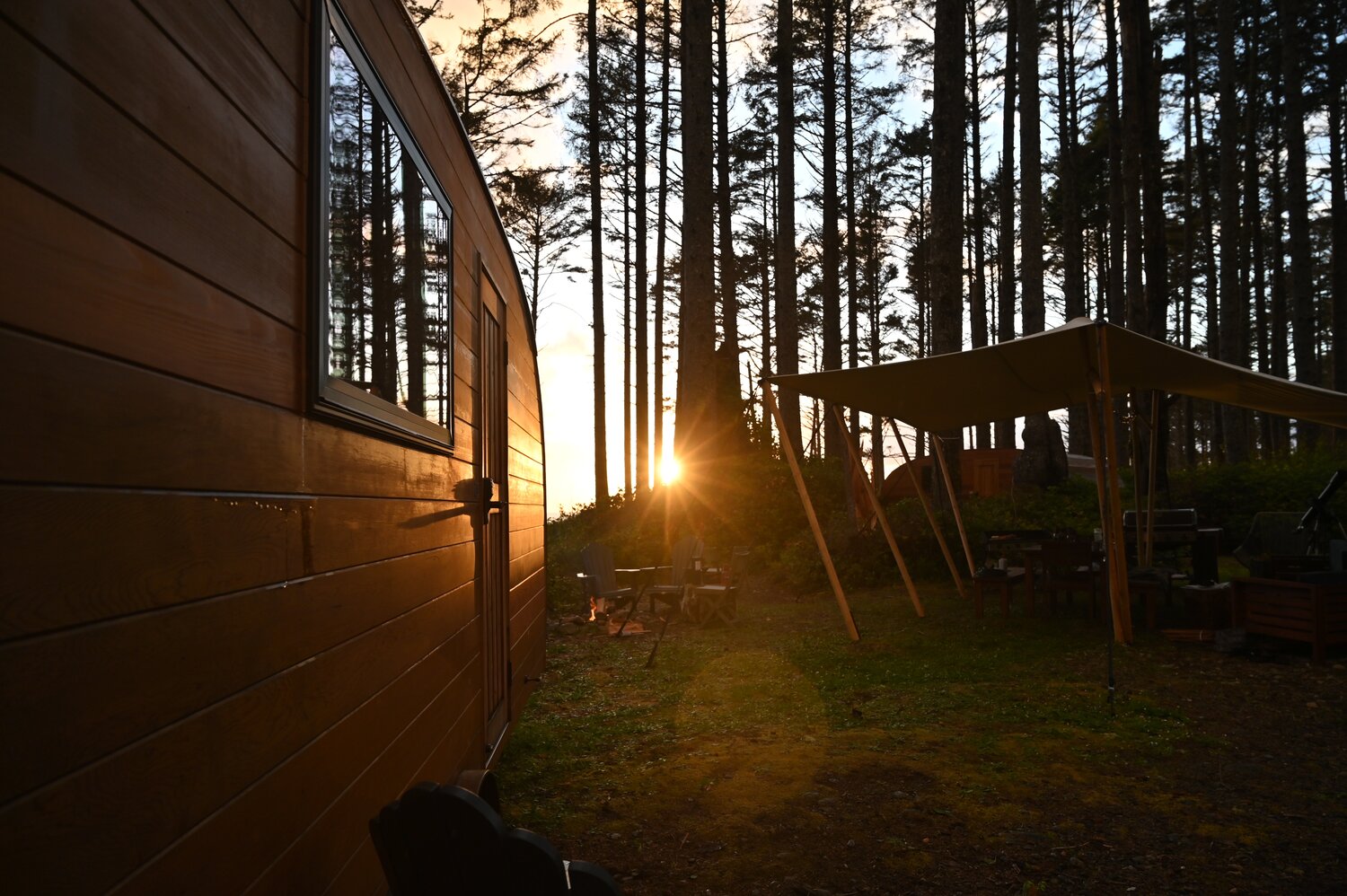Future Hospitality
podcast
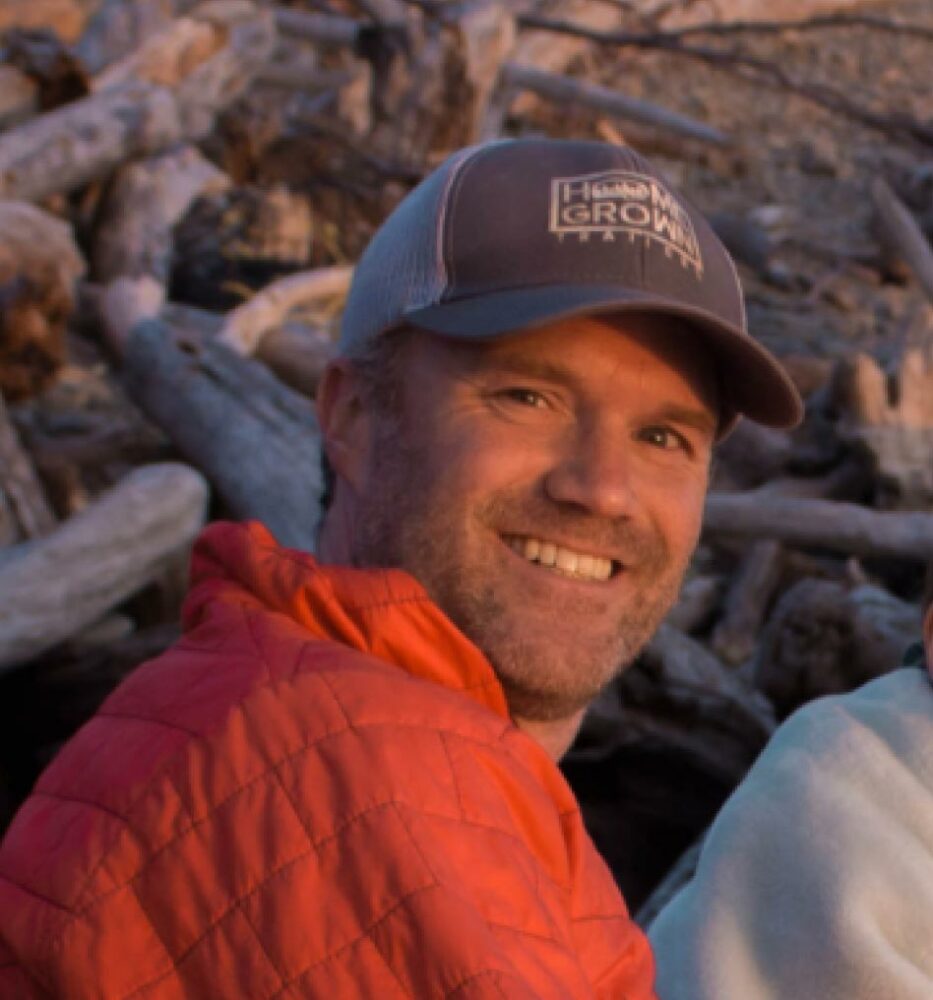
#26: Creating an Immersive Outdoor Lodging Experience: Corey Weathers
April 1, 2021
Jeremy Wells: Corey, thank you so much for joining us today. We’re really excited to have you on the podcast.
Corey Weathers: Thanks so much for having me.
Jeremy Wells: Awesome. We have been enjoying seeing what you guys are doing at ROAM Beyond and just the experiences that you’re creating and it’s really exciting, really wanting to visit one of these someday. So we’re excited to talk about that with you today.
Corey Weathers: Great. We can’t wait to have you come visit. It’s a pretty remarkable experience we put together.
Jeremy Wells: Yeah. So before we dive into, ROAM and kind of the details and what that looks like, we’d love for our listeners to know a little bit more about you, Corey, and kind of your personal journey and your career, this path that has led you to where you’re at today with ROAM.
Corey Weathers: Yeah. I think my background and the experiences I’ve had in life have very much brought me to where I am now and the experiences that we want to bring to the world and my business partner, Jake, and I have a lot of similar histories growing up and kind of evolving as individuals over the years. And I think that’s why we’re in the place we are right now.
“I was pretty fortunate growing up to have a lot of time exploring outdoors.”
Corey Weathers
I was pretty fortunate growing up to have a lot of time exploring outdoors. We lived in a very natural area outside Seattle. And early on, elementary school, middle school, I got very into outdoor activities, like mountain biking and rock climbing and camping and exploring with friends and with family, and even had a chance to participate in a program in middle school called Outdoor Fitness, which was a pretty revolutionary program that a teacher had put together that taught kids the skills of camping and outdoor activities and outdoor pursuits. And I feel like it’s something that should be taught in every school these days. But it really led me down a path of integrating those pieces a lot into my life.
And then I went to University of Oregon and got my bachelor’s in environmental studies. And obviously, with that kind of a mindset in the ’90s, spent a lot of time outdoors down in Oregon as well and just kind of continued that immersion, which is really what we promote in at ROAM Beyond is immersing people in nature and it was not something I did intentionally. It was just what I enjoy doing and being outdoors and going on trips and adventures with friends was a big part of my life.
All of that led me to spending some time at a place called IslandWood, outside Seattle, which was on an island, Bainbridge Island, just outside Seattle, and was one of the first true environmental education centers in the country. And I did my first year of my master’s degree at that program and it was actually a very formative time. It was their first full year of operation. And the whole idea was that Washington State had passed an education requirement that all fifth graders in Washington would receive so many hours of environmental education on an annual basis. And in order for that to happen, schools had to have a conduit to integrate that into the curriculum.
So IslandWood built a program where kids would come for a four-day immersive program, overnight program, and meet their environmental education requirement for the state, but more than anything, give them a chance to truly be in a setting that a lot of these kids had never experienced. A lot of these kids were from cities in Seattle and a lot of them had never left their neighborhood.
I’ll never forget. We had a group that arrived one day and we were walking down the trail with these fifth grade students. One of them turned to me and said, “These trees are so big. When did you plant them?” Just like no concept that these trees had always been there that we had not planted them as part of the experience. But I think for me, that kind of sent me down of course of really wanting to find more ways in my life to immerse people in the outdoor world and in nature. And so I went on to continuing to do my master’s in science education with really a focus on how we create a sense of place for people.
I knew I didn’t want to be a classroom teacher. That was not the pathway that I wanted to go down. I wanted to be focused more on bringing people those experiences in a different realm. So that led me into kind of a whole pathway that has gotten me to where I am now with ROAM Beyond.
Dustin Myers: I was going to say that’s a really cool kind of backstory and I loved the education aspect of it. Also growing up, doing outdoor activities, I think that’s one thing that our generation, and I’m speaking for millennials, especially really crave and really need is just getting away from the devices and the screens and just the memories that can be made in that outdoor experience. So that’s a really cool story about the kids’ program that you got to help build there.
“… people want to [get outdoors] in a sustainable and responsible way, but it takes kind of a different level of knowledge in order to be able to do that really appropriately.”
Corey Weathers
Corey Weathers: And I think what that propelled me down is exactly what you’re talking about is the idea that people do crave these experiences and they really want to have these experiences. They want to get outdoors. And in many ways, people want to do it in a sustainable and responsible way, but it takes kind of a different level of knowledge in order to be able to do that really appropriately.
And so that kind of takes me on to the next phase of, I think, what moved us towards ROAM Beyond. And that was the development of Homegrown Trailers, which is kind of a cornerstone to the ROAM Beyond experience and Homegrown Trailers is a manufacturer of essentially a travel trailer, but think of it like a tiny house that has all of the creature comforts that you might find in a tiny house, but it’s something that’s truly portable.
And we built the product with the idea of competing with the RV marketplace not really realizing the true opportunity was to provide people with experiences and not the vessel or the vehicle, if you will, to get them out into nature, but providing that kind of end-to-end experience, It’s interesting that in life, Jake and I work a lot in the ideas of transformational travel. And in life, there are a lot of these kind of transformational moments that obviously he and I have had and people who are a part of this network of have had that lead us down one pathway.
And I have to tell you one more story because it was a very transitional moment that I think has brought us to where we are now. This was back in 2015. And I was at the time running a sustainability consulting firm, focusing on helping nonprofits and corporate campuses, city governments to develop sustainability strategies, implement those, showcase their success. All if this kind of stemming off of what I had done in the past. And I was asked to give a keynote presentation at a sustainable design and development conference. And we were focusing on resilient infrastructure. So building buildings, designing communities around the idea of how are we going to be resilient to climate change and the ongoing impacts of climate change.
So I spent weeks putting together this presentation about what was going on globally, impacts that communities had experienced or nations had experienced, how they were redesigning, rebuilding and how they were planning for the future to be more resilient, given the impacts that will happen from climate change. And at the end, I showed a slide of the side project, which was the prototype Homegrown Trailer. We didn’t know it was going to be a prototype at that point. It was just a fun side project, but I called it the Green Trailer Project and talked about how I built this to kind of exemplify my commitment to traveling and getting out in nature in a sustainable way.
Having something from my family, if we ever were impacted by a natural disaster that we’d have a way to safely get out of town and get out of Seattle if needed. Maybe I’m a closet prepper with a sustainable twist. I’m not sure. But for me, it was just a little kind of end to the story. But over the next two days of the conference, everyone who came up to me want to talk about the trailer and not about this presentation that I had done talking about all of these big initiatives around the world. And I thought, “Man, maybe there’s something else here to this little side project.” And that’s what kind of propelled me forward to launch Homegrown Trailers and be able to provide this product and this opportunity to give people experiences, not knowing, once again, that that was going to propel me down the pathway of launching ROAM Beyond years later.
Dustin Myers: Yeah, that’s really, really cool. And anyone who hasn’t seen these trailers needs to look them up because they’re really captivating and just call out for adventure. Just makes me want to get in one.
Corey Weathers: I like that tagline, calling out for adventure. That’s exactly what they do. That’s great.
“…as with all things in life. They just don’t happen until they happen.”
Corey Weathers
Dustin Myers: Tell us a little bit more about how you got connected with Jake and what led from having this cool trailer to creating these places and experiences for people.
Corey Weathers: I think Jake and I lived very parallel paths for many, many years and probably should have connected much sooner than we did. But as with all things in life. They just don’t happen until they happen. So we had launched Homegrown Trailers in 2016 and the two things that we’re going to focus on was building a fleet for rentals, so that people who couldn’t afford or didn’t have the means or didn’t really frankly want to purchase had the ability to rent one and hitched up to their vehicle and tow it and take it someplace fun and have that adventure and have that immersive experience. We did a really good job of building up resources and trip ideas and all of those pieces. And then the other piece of the business was building and selling to individual customers.
Well, two things happened where Jake and I connected through that process. One was we were sending a lot of people out to the Olympic Peninsula on trips and out to Olympic National Park from Seattle. And Jake was running a company at the time called Evergreen Escapes that ran day and multi-day adventures. A lot of them were centered around Olympic Peninsula and the Olympic National Park. And their biggest pain point as a business was lack of appropriate lodging. This is now the pain point that we’re trying to solve for the adventure travel industry and for individuals in general is that a lot of these amazing natural destinations that people go to, they have an option to stay at the very, very limited lodging opportunities like National Park Lodges or other very unique lodges that have been around for a long, long time that are kind of grandfathered in. Or hop in a car or a van or a tour bus or whatever it might be and drive hours and stay at a Super 8 Motel somewhere outside of that area where they’re exploring.
And Jake was really passionate about trying to find ways to develop lodging right there, near recreation so people could literally get done with the hike and then have a place to stay and the campfire experience and that whole experience, but something that was a little bit more elevated and more comfortable than the tent camping experience. So he and I put two heads together in our first year of running rentals with Homegrown Trailers, but just realized there wasn’t quite enough demand just with his business, and we weren’t really in a position to try and aggregate a bunch of different tour operators and providers to offer lodging out in that particular area. But we’ve had to keep in touch because we knew that we had connected and that there was a great opportunity for us to probably work together in the future.
Well, fast forward a couple of years, in 2017, we did a survey of all of our followers for Homegrown Trailers and ask them, “What was it that you love about what we do? What do you love about the product? What do you love about the business?” And essentially trying to find out if the sales market was as big as we thought it was. And overwhelming, the response came back and we got literally thousands of responses to the survey. The responses came back saying, “Love what you do. Love the handcrafted aspect. Love the sustainable aspect of it. Love the fact of getting out into nature in a way that is responsible and to some extent it’s something that kind of replicates nature and is making natural products versus a traditional RV.”
But we don’t really want to buy it. We don’t want to tow it. We don’t have a tow vehicle. We don’t want to own a tow vehicle. We own a Prius and we live in the city. We don’t want to own a tow vehicle. We don’t want to store it and maintain it, do all those things. And I remember looking at my business partner at the time saying, “I think we started the wrong business.” And realizing that we, to be successful, probably had to make a pretty dramatic change.
So we made a commitment and over that year we designed our new, larger timberline model, which if you look at the marketing for ROAM Beyond, that is the lodging unit, the cabin, the dwelling, the camper, or whatever people call it, they call it a lot of different things, that you will stay in when you come to ROAM Beyond. But we designed that specifically with lodging in mind. So just enough space in the closet to hang your clothes for a few day trip, a spot for your roller bags to slide underneath the bed, just the amenities you need enough space in the refrigerator for, food for a few days, but lots of counter space for entertaining and preparing food and really good natural light for connecting with the outdoors.
And I spent the better part of 2017 and early 2018 out on the road doing business development, talking with national parks, with small kind of boutique resorts, with wineries, with concessionaires and lodging providers, with the idea of selling bulk units to these entities that would buy them and then offer them as lodging themselves. And I’ll say everybody fell in love with what we’re doing once again. They loved the concept. They loved the product. It fit a really specific niche for them. But at the end of the day, everyone only needed it seasonally.
“Until you came on the scene, we didn’t even know that it existed.”
I’ll never forget my conversation with Yellowstone National Park. I met with the director of lodging. And she said, “You know, for years we’ve been looking for something that we can put into our campgrounds because we know we’re missing out on a huge opportunity by not offering something more elevated than RV spots and tent spots.” But for Yellowstone, they need something that runs off the grid because there’s no power available, something that is hard sighted, that bears are not going to get into. So that cancels out the canvas tent piece, something that is low impact, that’s not going to have an impact on the landscape and something they can move off of the property seasonally because Yellowstone campgrounds are closed in the winter time and they need to put everything in storage or away. And she said, “Until you came on the scene, we didn’t even know that it existed.” And really in many ways it didn’t exist before we developed the Homegrown Trailer.
She said that, “It doesn’t make sense for us to buy them. Can you lease them to us for five to six months out of the year?” And I thought, “Man, how am I going to make this work? This is a really challenging thing to look at a bunch of seasonal leases for these different entities.” And so that’s when I called Jake. And I said, “Jake, you know tourism, you know travel. I think there’s an opportunity that I’m missing and I’m not sure how to put these pieces together.”
So this was the fall of 2018 and Jake and I had a couple of two-hour strategy sessions and in a very, very short time, just a matter of weeks, realized that there was a monumental opportunity for us to jump into a new space collectively. And that was to offer seasonal migratory pop-up lodging and lodging around outdoor recreation areas and other places where traditional lodging was not viable. It didn’t pencil because of the seasonality. From an impact standpoint, there was no ability to build lodging in these areas, but there was such a need and such a demand to provide lodging in these unique remote off-grid even more sensitive areas.
And so we very quickly, in a matter of months, raised initial capital and launched the business. I mean, this went from idea to business, to having people on site in about six months, from fall of 2018 to early spring of 2019. So it was very quick evolution, but Jake and I are both big time visionaries and luckily very well connected and we’re able to pull together a lot of resources in a very short timeframe. And so that’s how ROAM Beyond was born.
Jeremy Wells: It’s a really cool story. I love particularly the part about how you surveyed your customers and you learned a lot of new information about that and realize, like you said, you’re in the wrong business, and it kind of forced you to pivot and to change, like you said, and I think that that’s a really important step for any business really to be able to do that. We do surveys and things like that with a lot of our clients when it comes to the perceptions and the needs of the market and things like that. So I love that you went through that process. And I think that’s something that every person could learn from. So that’s really cool.
“People love providing feedback, especially when asked to provide feedback.”
Corey Weathers
Corey Weathers: Yeah. I think too many organizations feel like they’re being too vulnerable or maybe I’m saying we don’t know if we’re doing the right thing to the world and to their collective followers and fan base, but people love providing feedback, especially when asked to provide feedback. And I feel like every time we’ve done a survey, whether it was with Homegrown Trailers or ROAM Beyond, we’ve learned so much more than we would have anticipated, especially if you asked some very pointed questions and allow people to pick a dropdown answer. But then giving people the chance to provide some open-ended feedback, you’re going to learn things you never would have imagined you would have learned.
So I guess for those entrepreneurs and others who are kind of struggling with, “Am I doing the right thing?” I had an inkling. There’s a book called, I think, The Natural History of Innovation by Steven Johnson and he talks about something there called “the slow hunch” where over months or even years, you feel like there’s something different, something else you should be focusing on and sometimes it takes that aha moment. And for me over the years, I think those surveys have been that aha moment that I felt like in my bones that something should be run differently, operated differently. And once you get that validation from your customer base and your followers, then it’s very easy to make the decision to move in a different direction.
Jeremy Wells: Yeah. Yeah. That’s so important. It sounds since you guys launched ROAM Beyond, obviously, it seems like travelers and consumers, as you kind of alluded to, are responding very well to what the concept is. I know that over the last few years, this idea of sustainability and more conscious travel. A lot of people view that as like a trend, I think.
Corey Weathers: Sure.
Jeremy Wells: I mean do you view it as a trend or do you view it as more than just a trend?
Corey Weathers: It’s a really good question because, in fact, Jake and I were just talking about this with a group of our investors last week as we were talking about kind of the next phase for the company and where we’re headed that Jake hates the word, I shouldn’t say hate, but dislikes the word trends because oftentimes when we talk about things trending, it’s something that’s going to go away fairly soon. If it’s something on Instagram or something, I’ve got two girls, young girls, so TikTok, there’s all these things that trend, but in a matter of weeks they’re gone. And I think the difference between a trend in what we’re seeing and that I think we’re seeing a progression towards mainstream. And that’s obviously as an entrepreneur, that’s where you want to be, that’s where investors want you to be is moving towards something that is becoming mainstream and becomes kind of integrated into our lives.
When I look at the idea of trends, I hearkened back on the term LOHAS. And I don’t know if you guys ever heard of that. There used to be an organization called The LOHAS Group that was kind of a demographic focused organization. I think they kind of went away a few years ago because The LOHAS has become mainstream and LOHAS stood for Lifestyles of Health and Sustainability and it was a whole set of demographics of this emerging population of people who wanted organic foods and fleece jackets made out of a hundred percent recycled bottles and all of those pieces that groups like Whole Foods and Patagonia and others really pushed on in the early 2000s. And now it become mainstream. I mean, you can go to an outdoor gear store and you can find five different manufacturers that you can buy clothing from that’s made out of a hundred percent recycled plastic bottles. Patagonia was the pioneer, but now it’s become mainstream. So wasn’t a trend. It is now just the way that clothing is made.
The same with organic food and non GMO and sustainably harvested foods. A lot of small co-ops and then Whole Foods were really kind of the driving force behind that. And it was very much seen as a trend, but now it is mainstream. I look back at when I went to Eugene, Oregon in the late ’90s for my bachelor’s, it was really the first time that I was exposed to the co-op and the natural food grocery store. And granted, there were some fringe ones in Seattle, but nothing in my neighborhood, nothing that I frequented. I was going to Albertsons and Safeway and QFC for my groceries before I went to Eugene. But in Eugene, it was almost mainstream. All of the grocery stores are on campus, where I and my friend shops when I was in college was at the natural food store. It was what you did.
“… a regenerative travel experience.”
And interestingly enough, when I came back to Seattle, met my wife, Heidi and we got married, we bought a house in the Green Lake Neighborhood, which was about five blocks from the first Whole Foods that opened in Seattle, and that became a mainstay in our lives. We did almost all of our grocery shopping at Whole Foods. And that just became part of our life. We had an expectation that we could get organic food. We could get sustainably harvested fish. We could get all of those items and. And I would say that, for me, that continues today. And I think we’re seeing the same with travel. The difference with travel is that travel is so comprehensive. It’s not just selecting foods. It’s not just selecting a fleece jacket. It’s all about the entire experience end to end. How do you travel to get there? Where do you stay when you’re there? What types of activities do you take part in? Is the hotel that you’re staying in providing you with towels made out of organic cotton? I mean, there are all these layers of complexity to how sustainable is this experience.
But consumers have an expectation that they can start to find the Whole Foods of travel or the Patagonia of travel where they don’t have to think about whether or not this is sustainable, responsible, ethical, that it just is because the company has been built around those concepts. And for us, with ROAM Beyond, that’s really what we want to do is we want to build an experience, build partnerships, build tools and resources, so that from end to end, people can truly have a sustainable, responsible, ethical, and in many ways as we’re moving forward, regenerative travel experience.
I don’t think it’s a trend. If it was a trend, I don’t think I would be trying to do what I’m doing and trying to raise investment to do what we’re doing and to push on so many levers to make all this happen. I truly think in the next decade, we’re going to see that sustainable conscious travel, transformational, regenerative travel, all of those things are very much becoming mainstay in people’s lives, depending on what they’re looking for and what they want just as Whole Foods and Patagonia have done the same and what they’ve been able to accomplish.
And on top of that, the work that Jake, my business partner, is doing with developing The Transformational Travel Council is this consortium of global leaders, thinking about the next phase of travel and how do we really transform the landscape of travel, how do we transform or allow travelers to have an opportunity to transform themselves as they come in and have these experiences. It’s critical that you have providers out there that are offering that end-to-end experience that kind of hits all the tenants that people are looking for. So that, one, they can do it in a responsible way, and two, they don’t have to think as much. They can truly go out and immerse themselves in that experience and know that it’s going to hit the mark on what they expect.
But it’s going to take time. It’s years away from it being fully mainstream. But I think with the pandemic, we’re seeing a lot of that expedited. And I think across the board we’re seeing some major changes within our world due to the pandemic. And I think travel is one of those things that’s going to change exponentially in the years to come. Whereas had the pandemic not happened, it might’ve still continued to be an incremental change.
Jeremy Wells: Yeah, totally. Yeah. We just spoke with Mona Lewicka from The Transformational Travel Council a couple of episodes ago.
Corey Weathers: That is wonderful.
Jeremy Wells: Yeah. It was great to hear like the vision and things like that, how they’re pushing this movement forward. I think I agree with you. It’s more than a trend for sure or it should be especially. So that’s really cool to hear your viewpoint on that too.
Corey Weathers: Thank you.
Dustin Myers: Yeah, Corey, I’m curious more from the operations and practical side. Is ROAM Beyond purchasing property and rolling these in? Or is it a lease situation? You mentioned like Yellowstone and national parks. Is it something where you can sign a lease and bring in these units and start going from there? What does that look like?
Corey Weathers: It’s definitely an evolution for us as a company, but primarily our focus is to identify land that’s either not currently being used and is owned by somebody or is being used in a way that could be used more responsibly, more sustainably, and/or by more people who are willing to pay a little bit of a premium to have an experience that drives improvements to that property and drives kind of the stewardship those properties in those locations. So we break our portfolio now and into the future down into two categories. The remote off the grid rural experience, which is around outdoor, destinations, and recreation destinations. And most of those are seasonal.
So looking at say a spot like Olympic National Park is really late April until early October is kind of the timeline in which people are going to be having that experience. You look at someplace like Tucson or Sedona, and it’s very much the opposite of that. So you have that winter experience and that time of year that it’s more desirable to go to those locations. So we’re building a portfolio and a network in really a seasonal migratory pattern since we like to use natural terms of how our inventory moves around geography, um so that it can be in the right place at the right time. And then also it doesn’t just mean to provide people lodging when they want to be there, but for us, it also means from a financial standpoint, putting our assets to work at the right time of year in the right place.
And I think the biggest challenge with glamping is that glamping for the most part is very seasonal and it’s very time intensive to set up and to take down and to make those seasonal changes. And on top of that, you have a lot of seasonal employees, which is a hard thing on an annual basis to hire a seasonal team and ensure the level of customer service that you want. So our goal is that our inventory has a little bit of downtime typically in October and April or November and April. And outside of that, we are moving and setting up our next site and in launching our next experience in our next location.
And with that, having both team that works in a more of administrative capacity that can be deployed out to sites as needed, but then our site management teams that will move with the seasons as well and are interested and enjoy living that lifestyle where they get to kind of live in two different areas throughout the year and manage those sites. So I say that for every four or five sites that we launch, most of them are going to be within that remote and seasonal capacity. And then one will be a flagship site. And so we just launched, as you guys are probably aware, our first flagship site in Montana. And the flagship site that will be year-round and the uniqueness of where we are in Montana in the Flathead Valley near Glacier National Park is that there is a very strong winter contingent. People who are skiing at Whitefish Mountain, people who are snowshoeing and cross-country skiing in Glacier National Park. If they closed the road, you can actually snowshoe and cross-country ski up going to the Sun Road.
In the next probably six to eight weeks, they’re going to open it to cycling. So before they open it to cars, you can actually go and cycle up that road, which is just absolutely amazing. It is a breathtaking road in general. But biking up is phenomenal. And then it will resume to general operations in the summer. There’s so much opportunity in that area year-round that it makes sense for us to have a flagship location. And then our flagship locations let us kind of centralize our workforce for our remote locations as well. So whether it’s for repairs, for research and development on new solar technology, new battery technology, we can do all of that in a more controlled environment at the flagship location and then more effectively support our remote locations. So we have in our business plan on a whole idea of where our next three or four flagship locations will be and what our remote locations will look like around those as we move forward.
So primarily, we’re leasing property. We’ve done both private landowners as well as public entities. Leasing and operating inside National Park is a multi-year process and it’s something we have been working on since. 2018. And we’re now kind of moving into some more robust conversations around what that will look like. I think the beauty of that is that it allows the National Park system to offer a little bit more of a controlled experience for people as they come in and a little bit more of an elevated experience. The concern that I have and I know the national parks have as well is that we don’t want it to be so comprehensive that it takes away the opportunity for people who maybe can’t afford to do that type of an experience from having the experience. I mean, national parks and state parks and others are for everyone. And so we have to make sure that that’s accessible to everyone. So very much something that’s on our mind. But we will continue to focus on the least seasonal locations and build our portfolio of these flagship properties.
And there are a number of ways restructuring the flagship properties of whether going beyond just purchasing or partnering with a real estate development group or launching an LLC that would purchase the property. It kind of depends on what’s right in terms of timing for the company as we grow and the best way to access capital, which I feel like I’m getting an MBA and investments right now in terms of all the conversations we’re having around those pieces because it’s such an intricate part of the business and the opportunity for us from a growth standpoint. Fortunately, I love it. But it’s a lot to take on with everything else going on within the company right now as well.
Dustin Myers: I got to say this concept, I know it kind of took a while to get to where you’re at and some different iterations.
Corey Weathers: It did.
Dustin Myers: But where you’re at is genius.
Corey Weathers: Thank you.
Dustin Myers: The mobility, the sustainability, following migratory patterns and just making efficient use of the human resources, I’m kind of blown away at how all of this has come together. It’s really impressive.
Corey Weathers: Well, I’ll layer in one more thing, which I think is going to be really exciting is that we are looking at doing some pop-up short-term weeks of experiences this year as well, just because COVID has presented so many interesting and unique challenges that we feel the need to be a little bit more nimble. But I’m kind of excited about what that may hold for the future. As we get back to concerts and festivals, having the opportunity to have a pop-up experience there, as we get back to some very, very seasonal things like harvest time in a wine country. I don’t know if you guys have ever been to a wine country in California, Washington or Texas during harvest time. But it’s a really fun time and unique time to be in that area. There’s never close to enough lodging in those areas during those time periods. So how we can offer short-term pop-up lodging in those areas that doesn’t necessitate somebody actually having to try and build lodging and keep that going year round is super exciting for us.
“What’s most fulfilling about the work that my team and I do is being able to provide people with experiences that create those lifelong memories.”
Corey Weathers
Jeremy Wells: That’s awesome. It’s been really cool to hear all of the stories and all of the thinking that’s gone into this concept and this experience. It’s so unique. So thank you for sharing that with us. One final question. As we wrap this up, obviously the name, Future Hospitality Podcast, we always like to ask the guests that we speak with what they’re excited about as it relates to travel, tourism, hospitality, or whether it’s personally or with your business. So you already mentioned, kind of alluded to one just a moment ago, but do you have any other things in the horizon that you’re really excited about?
Corey Weathers: In terms of where we’re headed as a company?
Jeremy Wells: Yeah, company or personally, either one.
Corey Weathers: You know, for me, I think what’s most fulfilling about the work that my team and I do is being able to provide people with experiences that create those lifelong memories. Some of my best experiences in life are camping, being outdoors, adventuring with friends, with family. And those are the things that stick with you for a long time. I think at this point in the evolution of our world, coming out of a pandemic, that desire is going to be stronger than ever. People have been, as we all know, quarantined and cooped up in within their quarantine bubble for almost a year now. And the desire to get back out and travel is pretty strong.
We get these weekly trends from a company called Destination Analysts and they’re really looking at the global trends of travel and the desire and the comfort are really starting to come back in terms of travel. But people are going to make major changes to where they go and what they do. And being outdoors, being naturally socially distant, being exposed to those wide open spaces where they’re not as many people as if you went to Las Vegas for the Eiffel Tower are really, really desirable. And I think they’re going to be even more desirable.
My concern is that what happens if these natural areas get overrun? And especially with people who haven’t had experienced traveling in those areas and don’t know how to be responsible, don’t know how to kind of bring the right ethics to that experience, they’re going to need guide. They’re going to need guidance and support to do it appropriately. I’m really excited for ROAM Beyond to be able to play that role, to offer people a safe educational, somewhat curated experience near these unique natural destinations because I think that’s going to be better for everyone.
Glacier National Park, their superintendent just gave a presentation talking about what to expect for this summer. He has two major concerns. What is it? October of this last year was the busiest month ever for Glacier National Park in the history of the park. Because people wanted to travel, they were finally comfortable traveling again, but they wanted to get out into these wide open spaces. So they’ve decided to hop in the car and drive to Glacier National Park versus the trips they had planned. That’s overwhelming to the park system and they’re going to need support both from lodging and logistics and otherwise.
So we see that we can play a role in helping to promote more responsible tourism as people are getting out into these natural areas. So that’s a huge opportunity for us as a business. But from an ethos standpoint, in terms of what we’re trying to accomplish, the more people we feel like we can immerse in nature and in some ways be that catalyst for change on a mainstream level, if we can do that and scale our business effectively, we have done more than I could ever hope for with the business, just like people going into a whole foods and going, “Oh, I didn’t know I could actually buy that. That was produced in a responsible way or came from an organic source.”
We want to provide the same to people when they come and stay with us that, “Oh, I can travel. I can adventure. I can stay in a way that is sustainable, is responsible, is connected with and it doesn’t have an adverse impact on the community,” in ways that maybe they never would have thought of. But we get to be that educational conduit to them to hopefully allow them to return to their lives back home with some ideas and maybe some changes they can make in their lives to be better members of their local and global communities because of the experience they’ve had and because of the curative experience and the education we’ve been able to provide to them were onsite.
So I think we have a huge opportunity right now to build a really successful, sustainable, or scalable business, but do it in a sustainable way and do it in a responsible way and be truly a net positive add to the local and global communities where we operate. That’s my that’s my vision on the future.
Jeremy Wells: That’s awesome. Yeah. I can’t wait to see where you and Jake and ROAM Beyond go from this point and I’m excited to follow along. And Corey, thank you so much for joining us today. It was a great pleasure having you on podcast.
Corey Weathers: Thank you both for having me. I appreciate you allowing me to tell the story and think through some of these next phases for the company along with you guys.
Dustin Myers: Thank you so much.
